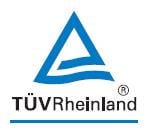In the future, the extent of connectivity within the smart home will continue to evolve and expand, encompassing more and more aspects of the home. The scope of wireless device connectivity ranges from entertainment, energy control systems, medical devices, security and more. Smart appliances and smart lighting are predicted to see major growth in the next decade. According to Global Industry Analysts, the global smart lighting market is projected to grow to $47.1 billion by 2020*. In a recent press release by Markets and Markets, the smart appliances market is said to be worth $37.2 billion by 2020**. What are the driving factors in this market growth and how will it benefit consumers?

Key Factors in the Future of Smart Home Appliances
Government Initiatives on Energy Conservation
The government offers many incentives for implementing energy-efficient projects such as tax credits, grants, rebate programs, and loan funds, to name a few. The Federal Energy Management Program (FEMP), for example, offers project financing, reporting and data, publishes notices and rules related to federal energy management, and more.
Energy Efficiency Regulations
Energy regulations for appliances and lighting equipment have new/revised standards, test procedures, implementation, certification, enforcement, and requirements for higher energy efficiency. The Department of Energy (DOE), through the Buildings Technologies Office (BTO), implements minimum energy conservation standards for more than 60 categories of appliances and equipment.
The IoT Evolution
The Internet of Things (IoT) is the network of physical devices and technologies that collect and exchange data. Smart homes, and smart cities are continuously evolving and growing in the IoT ecosystem. This coupled with the consumer’s need to stay connected will continue to drive the smart market forward.
Declining Prices of Components
Lower price points in device components result in high margin growth in smart device manufacturing.
Benefits of Smart Home Lighting and Appliances
When it comes to smart home lighting and appliances, the benefits for consumers are almost endless. Of course, the main benefits are energy management and the convenience it adds to consumers’ lives, but it also helps with productivity, health, adaptability and more.
Better Energy Management
Reduces energy consumption of appliances and lighting which reduces the cost for the consumer to operate and use the products.
Health and Comfort
When it comes to health, comfort and overall wellness, smart home and lighting can play a huge role in day-to-day life and can be very beneficial to long-term health. One way smart lighting can help is by promoting production of melatonin on exposure to warm color temperature light in the evening which helps induce sleep and improves the Circadian Rhythm. Smart lighting can also help in improving the mood, thereby impacting emotions positively.
Remote Access and Increased Security
Consumers can access their home systems and appliances from a remote location using their smartphones or tablets to lock their doors, set alarms, turn on/off lights, increase brightness or change color, or even shut off the coffee pot, among many other possibilities.
Adaptability
Smart technology has the ability to recognize and adapt devices to user behavior. For example, dimming the lights on sunny days, turning interior lights on prior to homeowner returning, and so on.
App, Voice, and Motion Control
Smart technology has given consumers the ability to literally have control in the palm of their hand (or voice!) Not only can consumers use an app on their smartphone to control their smart systems, they can also use hand motions and voice control within their homes for managing their smart devices.
Convenience
All of these benefits lead to the most important benefit for consumers – convenience. Upgrading to smart devices within their homes or businesses makes lives simpler and saves time.
Next Steps for the Smart Market
Through changes in market trends, coupled with the endless benefits for consumers, the smart market will see major growth in the near future. Whether it be due to consumer convenience, government incentives, or businesses looking to increase worker productivity, smart technology will become the new standard. However, smart devices are data-rich environments. This data can contain personal, private, and sensitive information - the perfect target for hackers.
As the market changes and grows, both manufacturers and consumers need to be concerned with the security of their devices.
For more information, speak with our experts:



